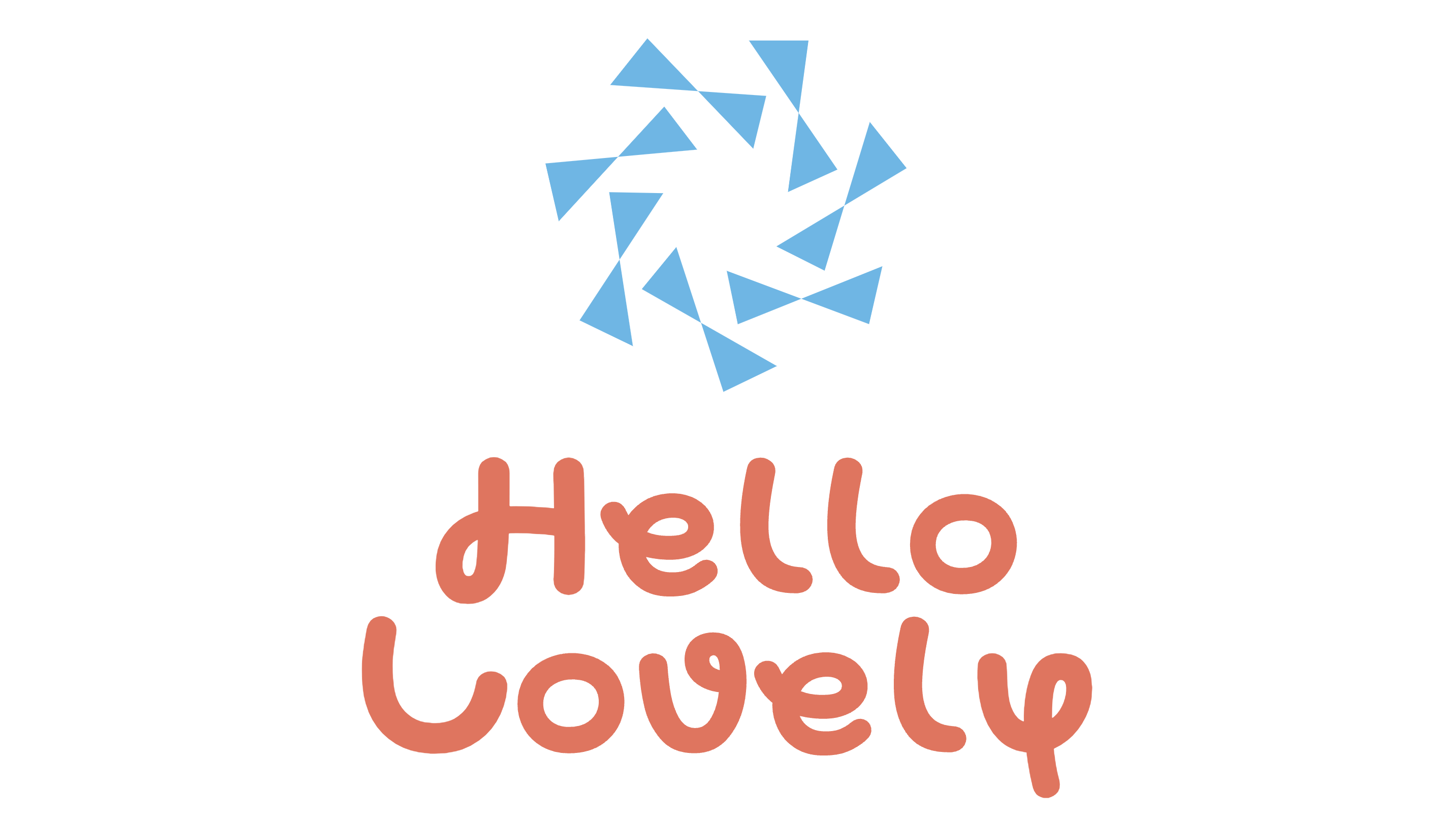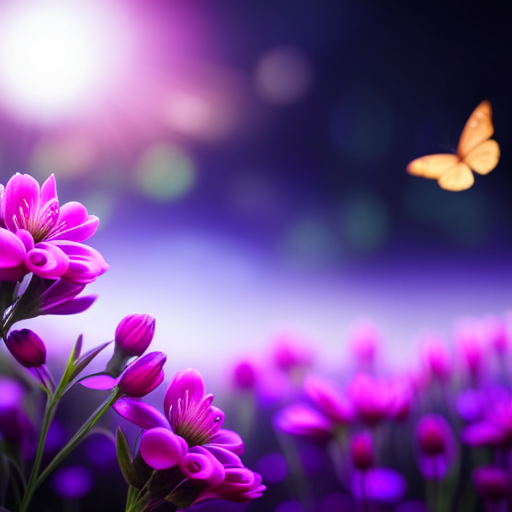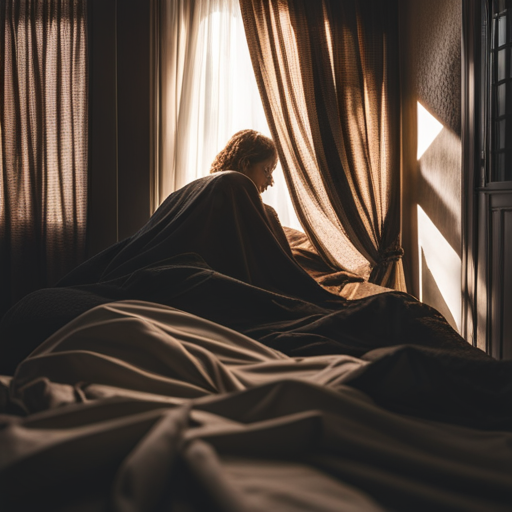Dream Meaning
What Is The Study Of Dreams Called

I’ve noticed that the enigmas of the mind captivate people. Among these, the realm of dreams stands out as particularly intriguing. Dreams, a common experience across humanity, have been the subject of study for hundreds of years across various cultures globally.
The scientific study of dreams is called oneirology, which comes from the Greek word ‘oneiros’meaning ‘dream.’In this article, I will explore what oneirology is, its history, purpose, types of dreams, role of subconscious mind, tools and techniques used in studying it as well as practical applications and future development.
Oneirology is a complex field that aims to understand why we dream and how to use these experiences to improve our lives. It involves exploring the content and meaning behind our dreams through various methods such as dream analysis and interpretation.
As you read on in this article about oneirology you will learn about its historical roots dating back to ancient civilizations who believed in prophetic dreaming and divination techniques for interpreting them. You will be able to gain insight into how different types of dreams can affect us emotionally or physically depending on their context or content.
Key Takeaways
- Oneirology is the scientific study of dreams, including their causes, functions, interpretation, and analysis.
- Dream analysis techniques involve keeping dream journals, using psychoanalytic approaches, and exploring cultural significance.
- Dreams serve as a way to process emotions and experiences from waking life, and they help us problem-solve by allowing us to think creatively.
- Oneirology aims to understand why we dream and how to use these experiences to improve our lives.
Definition of Oneirology
If you’ve ever wondered what the study of dreams is all about, look no further than oneirology. Oneirology is the scientific study of dreams, including their causes and functions, as well as their interpretation and analysis.
It encompasses a wide range of topics, from sleep disorders to dream symbolism and meaning. The scope of oneirology includes a variety of techniques for analyzing and interpreting dreams.
Some methods include keeping dream journals, using psychoanalytic approaches to uncover unconscious thoughts and emotions, and exploring the cultural significance of symbols in dreams. By understanding these techniques, researchers can help patients overcome sleep disorders or gain insight into their own psychological states.
Now let’s take a closer look at the history of dream interpretation.
History of Dream Interpretation
The history of dream interpretation dates back to ancient times, where it held significant cultural value. For instance, the Greeks and Egyptians believed that dreams were prophetic messages from the gods and would use them for divination.
In some cases, dreams were even seen as a means of healing, with certain individuals gifted with the ability to interpret them accurately. Over time, various cultures developed their own methods of interpreting dreams, often based on religious or spiritual beliefs.
These interpretations often had practical applications in areas such as medicine, politics, and warfare. Today, we continue to study dreams through oneirology and other fields in order to better understand their role in human psychology and behavior.
As we delve further into this topic, it becomes clear that understanding the purpose of dreams is essential for unlocking their full potential.
The Purpose of Dreams
One thing we all wonder about is why we dream and what purpose it serves in our lives. As someone who’s studied the psychological significance, interpretation, and analysis of dreams, I can tell you that there are several theories out there.
One of the most widely accepted theories is that dreams serve as a way for us to process emotions and experiences from our waking life. This means that when we dream, our subconscious mind takes over and replays events from our day or even from long ago, but in a symbolic form.
Another theory suggests that dreams help us problem-solve by allowing us to think creatively and outside of the box. When we sleep, our brain is free to make connections between seemingly unrelated ideas or concepts. This can lead to insights and solutions that may not have been considered while awake.
Ultimately, the role of emotions and experiences in the formation of dreams cannot be understated as they provide valuable information for self-discovery and personal growth.
With this understanding of the purpose behind dreaming, let’s now explore the different types of dreams.
The Different Types of Dreams
You may be surprised to learn that your dreams can fall into several different categories, each with their own unique qualities and characteristics. Don’t worry if you haven’t heard of these types before – they’re not commonly discussed in everyday conversation.
The first type of dream is known as a lucid dream, characterized by the dreamer being aware that they’re dreaming and having some control over the dream events. These dreams often feel more realistic and can provide a sense of empowerment.
Another common type is a nightmare, characterized by feelings of fear, anxiety, or despair. Nightmares often center around common themes such as being chased or falling from great heights. Note that nightmares can have both physical and emotional effects on the body and should be addressed if they become frequent or interfere with daily life.
Lastly, there are symbolic dreams that require interpretation through analyzing the various symbols present in the dream. Understanding these symbols can provide insight into one’s subconscious thoughts and emotions.
As we delve further into understanding our dreams, it becomes clear that our subconscious minds play an instrumental role in shaping our experiences during sleep.
The Role of the Subconscious Mind
Delving into the depths of our subconscious minds during sleep can be a terrifying yet exhilarating experience. Our dreams, which are products of our subconscious thoughts and emotions, provide an insight into our deepest desires and fears. The role of the subconscious mind in shaping our dreams has been extensively studied by researchers for years.
Dream analysis techniques have been developed to interpret the significance of various elements in our dreams, such as symbols, emotions, and recurring themes. These techniques involve analyzing the content of each dream to identify patterns that may reveal underlying psychological issues or unresolved conflicts. By understanding the hidden messages in our dreams, we can gain self-awareness and potentially resolve emotional traumas that we may not even be aware of on a conscious level.
Moving onto the subsequent section about the science behind dreaming, it’s important to note that while dream analysis techniques offer insights into the subconscious mind’s workings, they’re not based on empirical evidence. However, recent advances in neuroscience have shed light on the physiological processes underlying dreaming and how it relates to memory consolidation and emotional regulation.
The Science Behind Dreaming
Exploring the science behind dreaming can reveal fascinating insights into our brains and how they function during sleep. During Rapid Eye Movement (REM) sleep stages, which occur multiple times throughout a night’s sleep cycle, the brain becomes incredibly active, almost as active as it would be when we’re awake. This is when most of our vivid dreams occur.
Researchers have used brain imaging techniques to study brain activity during REM sleep and have found that certain areas of the brain become more active than others, such as the amygdala which is responsible for processing emotions.
Dream recall techniques can also provide insights into our subconscious minds. One common technique involves keeping a dream journal by recording all details of dreams upon waking up. This not only helps with recalling dreams but may also reveal patterns or recurring themes in dreams over time.
The study of dreams, known as oneirology, uses tools and techniques like these to better understand the mysteries of why we dream and what they mean for our mental health and overall well-being.
Continuing on from this subtopic, let’s now discuss some tools and techniques used in oneirology to further explore the world of dreaming.
Tools and Techniques Used in Oneirology
By using brain imaging and dream recall techniques, researchers in oneirology gain insights into the complexities of our subconscious minds.
One tool commonly used for studying dreams is called polysomnography, which involves recording brain activity, eye movements, muscle tone, and heart rate during sleep. This data is then analyzed to identify different stages of sleep and to determine when a person is dreaming.
Another important technique used in oneirology is dream analysis. This involves exploring the content of a person’s dreams and interpreting them in order to better understand their unconscious thoughts and feelings. To help with this process, some people keep dream journals or use apps that allow for sleep tracking and record their dreams upon waking up.
By analyzing these dreams over time, researchers can gain insights into how our experiences during the day affect our subconscious mind at night.
As we continue to explore the fascinating world of oneirology, it becomes increasingly clear how much our dreams can reveal about our mental health. Understanding the connections between our dreams and emotional well-being can provide valuable insight into mental illness and help us develop more effective treatments.
Oneirology and Mental Health
Understanding the relationship between our dreams and mental health can provide valuable insights into our emotional well-being, offering us a unique window into our subconscious minds. Dream analysis has been used as a tool to explore the underlying causes of mental health issues such as anxiety, depression, and trauma.
Oneirology is the scientific study of dreams, which involves analyzing dream content and interpreting their meanings to gain insight into an individual’s psyche. Dream therapy is a form of psychotherapy that uses dream analysis to help individuals identify unresolved emotional conflicts that may be affecting their mental health.
This therapy involves exploring symbols and themes in dreams to understand how they relate to real-life experiences. By uncovering unconscious thoughts and emotions through dream analysis, individuals can work towards resolving internal conflicts for improved emotional well-being.
In the next section on practical applications of oneirology, we will explore how this field can be applied in various settings beyond clinical therapy.
Practical Applications of Oneirology
In the field of oneirology, there are several practical applications that have been developed for therapeutic purposes. One of the most common and effective methods is dream journaling. Keeping a record of our dreams can help us gain insight into our subconscious thoughts, feelings, and desires. By analyzing our dreams, we can identify patterns and themes that may be impacting our mental health and overall well-being.
To illustrate the benefits of dream journaling in a more organized manner, I present to you a table showing its therapeutic effects:
| Therapeutic Benefits of Dream Journaling |
|---|
| Helps identify recurring themes that need attention |
| Provides insight into unconscious desires or fears |
| Enhances self-awareness and personal growth |
As seen in the table above, keeping a dream journal can bring about numerous benefits to one’s psychological state. This tool allows individuals to delve deeper into their subconscious world with greater understanding. Through this practice, one has the opportunity to engage in self-reflection leading towards better emotional regulation, problem-solving skills as well as enriched creativity.
The study of dreams through oneirology continues to evolve with new insights being discovered every day. As researchers continue to explore this fascinating subject matter, we can only expect even more significant breakthroughs in the future.
Future of Oneirology
As a oneirologist, I’m excited about the future of this field and the potential for discovering more about the human mind and behavior. Advancements in technology and research have already allowed us to gain valuable insights into the workings of the brain during sleep and dreaming.
With further progress in this area, we may be able to uncover even more about how our brains process information, emotions, and memories while we sleep.
Advancements in Technology and Research
With the help of new technology, we’ve made incredible progress in delving deeper into the mysterious realm of dreams. Technological advancements have allowed us to explore and analyze the brain’s activity during sleep, providing insight into how our thoughts and emotions manifest in our dreams. Research techniques such as functional magnetic resonance imaging (fMRI) and electroencephalography (EEG) have been instrumental in uncovering the neural correlates of dreaming.
One exciting area of research is the study of lucid dreaming, where individuals are aware they are dreaming and can even control their actions within the dream. Using fMRI scans, researchers have identified specific regions of the brain that become active during lucid dreaming, including areas involved in self-awareness and decision-making. By understanding how these processes work during lucid dreaming, we may be able to develop new therapies for conditions such as post-traumatic stress disorder or depression. As technology continues to improve and research techniques advance, there is immense potential for discovering more about the human mind and behavior through studying our dreams.
Potential for Discovering More About the Human Mind and Behavior
You can’t help but feel excited about the potential for uncovering even more about your own mind and behavior through further exploration of the mysteries of dreaming.
The study of dreams, also known as oneirology, has been an area of interest for researchers and psychologists for centuries. With advancements in research methods and technology, our understanding of dreams has expanded exponentially.
Not only is the study of dreams fascinating from a scientific perspective, it also holds great potential for cultural influences. Through analyzing dream patterns across different cultures and societies, we may be able to gain insight into how cultural values and beliefs influence our subconscious thoughts and behaviors.
This information could then be used to develop interventions that promote positive mental health outcomes within specific cultural contexts.
Overall, the study of dreams provides us with a unique lens through which we can explore the complexities of human thought and behavior.
Frequently Asked Questions
Can dreams be controlled or manipulated for a specific purpose?
As a researcher in the field of dream analysis, I have found that it is possible to control and manipulate dreams through the technique of lucid dreaming. This allows for intentional exploration and processing of subconscious thoughts and emotions.
Can dreams provide insights into past traumas or repressed memories?
Dream analysis and subconscious exploration can provide insights into past traumas or repressed memories. By examining the symbolism and themes in our dreams, we can explore the deepest parts of our psyche and unlock hidden memories that may be affecting our current mental state.
Are there any cultural or societal differences in the interpretation of dreams?
I find it fascinating how cross cultural dream interpretation reveals the historical significance of dream analysis. It’s intriguing to see how different societies have approached and interpreted dreams throughout history, providing valuable insight into the human psyche. One anachronism that comes to mind is the ancient Greeks’ belief in prophetic dreaming.
Can dream interpretation be used as a diagnostic tool for psychological disorders?
Using dream interpretation in therapy to diagnose psychological disorders raises ethical concerns. While dreams can provide insight, they are subjective and not always reliable. It should be used cautiously and with other diagnostic tools.
Is there a correlation between recurring dreams and mental health issues?
As a mental health professional, I have found that recurring dreams can be indicative of underlying psychological issues. Dream therapy and analysis may uncover unresolved traumas or conflicts to improve overall mental wellbeing.
Conclusion
In conclusion, the study of dreams is known as oneirology. It has a rich history and continues to be an important field of research in psychology and neuroscience.
By exploring the purpose and different types of dreams, as well as the role of the subconscious mind, researchers are able to gain insight into our innermost thoughts and emotions. Through various tools and techniques such as dream analysis and lucid dreaming, we can further understand how our dreams relate to our mental health.
The practical applications of oneirology extend beyond just understanding ourselves better; it also has potential implications for therapeutic interventions for individuals struggling with mental health disorders. As oneirology continues to evolve, there is great potential for further advancements in this fascinating field.
Manda is the visionary Editor in Chief of Hello Lovely. With an unwavering passion for dreams, Manda ensures that our content is meticulously curated, informative, and engaging.
Their dedication to providing high-quality articles, guides, and resources is evident in the wealth of information available on our platform. Manda’s expertise in dream research, combined with their editorial prowess, helps shape Hello Lovely into a trusted source of dream-related knowledge. Their goal is to create a vibrant dream-centric community where individuals can explore, learn, and connect.
Dream Meaning
When Deceased Visits In Dreams

I frequently hear anecdotes about individuals who have had dream encounters with deceased loved ones. These dreams are described as distinct from ordinary dreams, as they are more lifelike and intense.
In these dreams, the deceased loved one may communicate with the dreamer, provide comfort, or offer a message. Dream visitations from deceased loved ones can be both spiritual and psychological experiences.
They can offer a sense of closure, comfort, and healing to those who are grieving. However, they can also be confusing and unsettling, especially if the dreamer is unsure of what the dream means or why their loved one appeared in the dream.
In this article, we will explore the significance of dream visitations, common themes and experiences, as well as scientific and psychological explanations for these dreams. We will also discuss how to cope with grief and find comfort in dream visitations.
Key Takeaways
- Dream visitations from deceased loved ones offer closure, comfort, and healing.
- Symbolism holds significant meaning and messages in these dreams.
- Emotional reactions provide valuable insight and can help process grief and emotions.
- Dream visitations can be powerful experiences that evoke strong emotional reactions and provide insight into the afterlife and spiritual realm.
What are Dream Visitations from Deceased Loved Ones?
You may have experienced dream visitations from deceased loved ones, which are believed to be a way for them to communicate with you from beyond the physical realm. These dreams can feel incredibly real, as if your loved one is truly present with you.
In my own experience, I’ve had dreams where I’m talking to my grandmother, who passed away several years ago. In these dreams, she always seems to be at peace and offers me words of comfort and guidance.
Dream visitations can be incredibly powerful experiences, offering a sense of connection and comfort for those grieving the loss of a loved one. They can also provide insight into the afterlife and the spiritual realm.
However, these dreams can also be confusing and overwhelming, leaving us with questions about their spiritual and psychological significance.
The Spiritual and Psychological Significance of Dream Visitations
Imagine feeling the presence of a loved one who’s passed on, as if they’re right beside you, offering comfort and guidance. This is the experience of dream visitations, which can have both spiritual and psychological significance.
Here are three ways in which dream visitations can impact our lives:
-
Healing: Dream visitations can help us process grief and come to terms with the loss of a loved one. They offer a sense of comfort and closure that can aid in the healing process.
-
Connection: Dream visitations allow us to feel connected to our deceased loved ones, even after they’ve passed on. This can bring a sense of peace and comfort, knowing that they’re still with us in some way.
-
Guidance: Dream visitations may offer guidance or advice from our deceased loved ones, helping us navigate challenging situations in our waking lives.
Dream visitations can be powerful experiences, impacting our emotional and spiritual well-being.
In the next section, we’ll explore common themes and experiences in dream visitations.
Common Themes and Experiences in Dream Visitations
I find it fascinating how dream visitations from deceased loved ones can bring deep symbolic and meaningful messages. These experiences often evoke strong emotional reactions and responses, which can range from comfort and healing to fear and confusion.
Through exploring these common themes and experiences, we can gain a better understanding of the spiritual and psychological significance of dream visitations.
Symbolism and Meaning
When a deceased loved one visits you in a dream, their presence and the symbolism within the dream can hold significant meaning and messages for you. For example, if you dream of a deceased parent holding a key, this could symbolize that they are unlocking new opportunities for you or guiding you towards a new path in life. Similarly, if you dream of a deceased grandparent cooking your favorite meal, this could represent their love and nurturing presence in your life, even after they have passed.
To better understand the symbolism in your dream, it can be helpful to create a table to track the different elements and their potential meanings. Here is an example of a table you can use:
| Symbolism | Potential Meaning |
|---|---|
| Key | Unlocking new opportunities or guidance towards a new path |
| Cooking | Love and nurturing presence |
| Flowers | Beauty and growth |
By analyzing the symbolism in your dream, you can gain insight and understanding into the messages that your deceased loved one may be trying to communicate to you.
As we explore the different facets of dream visitations, it’s important to also consider our emotional reactions and responses to these experiences.
Emotional Reactions and Responses
Understanding our emotional reactions and responses to these experiences can provide valuable insight into the impact that the visitation has on our subconscious mind.
When I dream about a deceased loved one, my emotional response can vary greatly depending on the nature of the dream. If the dream is peaceful and reassuring, I often wake up feeling comforted and grateful for the visitation. However, if the dream is unsettling or frightening, I can feel shaken and anxious for hours or even days afterwards.
On the other hand, some people may experience a range of emotions from sadness and longing to joy and happiness when dreaming of a deceased loved one. These emotional responses are deeply personal and can be influenced by a variety of factors such as the individual’s relationship with the deceased, the circumstances surrounding their death, and their current state of mind.
Understanding our emotional reactions to these experiences can help us to better process and make sense of them.
Moving on to the subsequent section about scientific and psychological explanations for dream visitations, it’s interesting to explore how these emotional responses can be linked to our subconscious and the impact that the visitation has on our mental health.
Scientific and Psychological Explanations for Dream Visitations
There’s a lot of debate among scientists and psychologists about the validity of dream visitations. Some argue that these experiences are simply a result of our brain’s attempt to process grief and memories. In this view, dream visitations are nothing more than a projection of our own thoughts and emotions.
Others, however, believe that dream visitations are a real and meaningful way for deceased loved ones to communicate with us. These individuals point to the many stories of people who have received important messages or signs from their departed loved ones through dreams. While there’s no concrete proof that dream visitations are real, many people find comfort in believing that their loved ones are still with them in some way.
With this in mind, it’s important to note that there’s no one right way to cope with grief and find comfort in dream visitations. For some, these experiences may provide a sense of closure and peace, while for others they may not hold any particular significance. Ultimately, it’s up to each individual to determine what these experiences mean to them and how they choose to interpret them.
Coping with Grief and Finding Comfort in Dream Visitations
I find comfort in dreaming about my loved ones who’ve passed away. It’s as if they’re still with me, even if it’s just in my dreams.
The healing power of dreams is truly remarkable, and it’s helped me cope with my grief in ways I never thought possible.
For those who’re struggling with loss, there’re many support and resources available to help them through their journey.
The Healing Power of Dreams
Dreams have the ability to soothe and heal our minds and bodies, providing comfort and closure even when we are visited by deceased loved ones. In my experience, dreaming about someone who has passed away can be a powerful form of therapy. It can often feel like they are trying to communicate with us and offer us a sense of peace.
Furthermore, dreams can help us process our grief and make sense of our emotions. They may not always be pleasant, but they can be a safe space where we can work through our feelings and come to terms with our loss. Sometimes, our deceased loved ones may even offer us guidance or advice that we can apply to our waking lives. Dreams truly have the power to provide us with the healing we need during times of grief and loss.
Transitioning into the subsequent section about support and resources for coping with loss, it is important to remember that dreaming is just one way of coping. There are many other resources available to help us navigate the difficult journey of grief, and seeking support from others can be incredibly beneficial.
Support and Resources for Coping with Loss
You can find comfort and assistance in a variety of support and resources when coping with loss. One of the most effective ways to cope is to join a support group for people who are grieving. Being part of a group of people who understand what you’re going through can provide a sense of community and support that is invaluable during this difficult time.
Many support groups offer a safe and non-judgmental space where you can share your feelings and thoughts with others who have experienced similar losses.
Another resource that can be helpful is counseling. Grief counseling can provide you with a trained professional who can help you work through your emotions and develop coping strategies. A counselor can also help you navigate the complex emotions that come with grief and provide you with tools to help you move forward.
Additionally, there are many resources available online and in your community, such as books, articles, and workshops that can help you understand and manage your grief.
No matter what resources you choose, remember that it’s okay to seek help and support when coping with loss.
Frequently Asked Questions
Can dream visitations actually be messages from the deceased?
Yes, dream visitations can be messages from the deceased. I know it may sound unbelievable, but I have experienced it myself. It’s a way for our loved ones to communicate with us beyond the physical world.
Are there any negative consequences or dangers associated with dream visitations?
There can be negative consequences or dangers associated with dream visitations, such as feeling overwhelmed or disturbed by the experience. It’s important to approach these dreams with caution and seek support if needed.
Is it possible for multiple people to have the same dream visitation from the same deceased loved one?
Oh, sure, it’s completely normal for multiple people to have the exact same dream. Especially when it involves a deceased loved one visiting. Nothing to worry about, right?
Do dream visitations always feel comforting, or can they be unsettling or scary?
Dream visitations don’t always feel comforting. Some can be unsettling or even scary. I remember one visit from my deceased loved one where I woke up feeling more anxious than comforted.
Can dream visitations occur even if the person who passed away wasn’t particularly close to the dreamer?
Dream visitations can happen even if I didn’t have a close relationship with the deceased. It’s a comforting feeling to have them visit me, even if it’s just to say goodbye or offer closure.
Conclusion
In conclusion, I believe that dream visitations from deceased loved ones are a powerful and meaningful experience. Whether they’re a spiritual connection or a manifestation of our own psyche, these dreams can bring us comfort and closure during times of grief.
I’ve personally experienced the comfort of these visitations and know that they can provide a sense of peace and healing. As the old saying goes, "when one door closes, another opens."Dream visitations may be that open door, providing us with a connection to our loved ones who have passed on.
While they may not completely erase the pain of loss, they can offer a glimmer of hope and a sense of continuation beyond death. Embrace these dreams and cherish the memories they bring.
Eislyn is a gifted writer whose words weave enchanting narratives within the realm of dreams. With a profound love for storytelling and a deep curiosity about dreams, Eislyn’s articles transport readers into vivid dreamscapes.
Her writing style is both eloquent and thought-provoking, captivating readers’ imaginations and inspiring them to dive deeper into the mysteries of their own dreams. Eislyn’s exploration of dream symbolism and interpretation adds depth and nuance to our content, making it an absolute pleasure for dream enthusiasts to engage with.
Dream Meaning
What Does It Mean When You Have Dreams About Falling

I have experienced my fair share of falling dreams and have always been curious about their meaning. Waking up in a cold sweat after dreaming of falling from a great height can be quite unsettling.
But as it turns out, falling dreams are one of the most common types of dreams that people have, and they can carry a variety of different interpretations.
So, what does it mean when you have dreams about falling? Well, as with any dream interpretation, there’s no one-size-fits-all answer. Falling dreams can mean different things depending on the context of the dream, as well as the individual’s personal experiences and emotions.
In this article, we’ll explore some common interpretations of falling dreams, analyze the context in which they occur, and offer some techniques for coping with them.
Key Takeaways
- Falling dreams are common and can have different interpretations.
- Falling dreams can suggest a lack of control or feeling overwhelmed in waking life.
- Coping techniques include relaxation, meditation, visualization, and positive thinking.
- Seeking professional help may be necessary for persistent distress caused by falling dreams.
Understanding Common Interpretations of Falling Dreams
You’ll want to know that a common interpretation of falling dreams is that you feel a lack of control in your life. Falling dreams often suggest that you’re feeling overwhelmed or out of control in some aspect of your waking life. This could be related to work, relationships, or even your own personal goals and aspirations.
When we feel like we’re falling, we feel powerless and helpless, and this can often translate into our dreams.
To truly understand the meaning of your falling dream, it’s important to analyze the context of your dream. Think about where you were falling from, what you were falling onto, and any other details that stood out to you. This can help give you insight into what your subconscious is trying to tell you.
By taking the time to reflect on your dream, you can start to gain a deeper understanding of yourself and your emotions, and take steps towards regaining control in your waking life.
Analyzing the Context of Your Dream
As I’m analyzing the context of my falling dream, I’m reminded of the saying "actions speak louder than words."The actions and events that occurred in the dream can provide insight into what my subconscious is trying to communicate.
Here are some things to consider when analyzing the context of your falling dream:
- Where are you falling from?
- Are you falling alone or with someone else?
- How do you feel during the fall?
- What happens when you reach the ground?
By answering these questions, I can begin to unravel the symbolism and emotions behind my dream. Understanding the context can help me identify any underlying issues or fears that may be causing the dream.
Exploring possible triggers that may have influenced the dream can also provide valuable information. Perhaps there was something that happened during the day or a recurring issue in my life that’s causing this dream. By exploring these triggers, I can begin to address any underlying issues and work towards resolving them.
Exploring Possible Triggers
Exploring possible triggers for our dreams can be a fun and enlightening way to understand our subconscious better. By identifying the things that may have caused our dream about falling, we can gain insight into our fears and anxieties. Some common triggers for falling dreams include stress, anxiety, feeling overwhelmed, or a lack of control in one’s life.
In addition to these triggers, there may be specific events or experiences that have caused us to dream about falling. For example, if we recently went skydiving or bungee jumping, it’s not uncommon to have falling dreams as our brain processes and makes sense of the experience. By examining our current life circumstances and recent events, we can start to unravel the meaning behind our falling dreams.
Transitioning into the next section, there are techniques we can use to cope with falling dreams and reduce the frequency of them.
Techniques for Coping with Falling Dreams
When I have falling dreams, I find it helpful to practice relaxation and meditation techniques. By focusing on my breathing and clearing my mind, I’m able to reduce my anxiety and stress levels.
Additionally, I’ve found that visualization and positive thinking can also be effective in coping with these types of dreams. However, if falling dreams continue to have a negative impact on my mental health, seeking professional help may be necessary.
Relaxation and Meditation
Meditating is like taking a chill pill for your mind, helping you relax so deeply that even a dream about falling won’t faze you.
When I meditate, I focus on my breath and try to clear my mind of any thoughts or worries. This helps me let go of any stress or anxiety that was weighing me down, allowing me to feel more grounded and centered.
During meditation, I also like to incorporate some visualization techniques to help me feel even more relaxed. For example, I imagine myself floating on a cloud or drifting along a peaceful river. I also like to mentally repeat positive affirmations, such as "I’m safe and protected"or "I trust in the universe to guide me."
These techniques have helped me feel less anxious in my daily life and have also helped me cope with falling dreams. Speaking of which, let’s move on to the next section about visualization and positive thinking.
Visualization and Positive Thinking
Now, let’s dive into how you can use visualization and positive thinking to create a more peaceful and fulfilling life.
Visualization is a powerful tool that allows you to create mental images of your desired outcome. It can be used to reduce stress, increase motivation, and improve overall well-being. By visualizing positive scenarios, you can program your mind to focus on the good things in your life, which can help you to feel more optimistic and hopeful.
Positive thinking is another effective technique that can be used to cultivate a more positive outlook on life. This involves focusing on the good things in your life and reframing negative thoughts into positive ones. By doing so, you can train your brain to see the world in a more positive light, which can lead to increased happiness and well-being.
However, if you find that your dreams about falling are causing you persistent distress or interfering with your daily life, it may be time to seek professional help.
Seeking Professional Help
Sometimes seeking professional help can be the smartest solution for persistent distress caused by dreams of falling. As someone who’s experienced these dreams on a regular basis, I understand how unsettling they can be. It’s important to recognize that these dreams may be a manifestation of underlying anxiety or stress, and seeking help from a therapist or counselor can provide valuable insights and coping strategies.
Here are a few reasons why seeking professional help may be beneficial for those experiencing distressing dreams of falling:
- It can provide a safe and non-judgmental space to explore and process emotions related to the dream.
- A therapist can help identify underlying issues that may be contributing to the dreams and work on addressing them.
- Practicing relaxation techniques and mindfulness can help reduce anxiety and improve overall sleep quality.
- Cognitive-behavioral therapy can help reframe negative thought patterns and reduce the impact of the dreams on daily life.
- Talking to a professional can provide a sense of validation and support, which can be crucial in managing distressing dreams.
Overall, it’s important to prioritize mental health and seek help when needed. Dreams of falling can be a symptom of deeper emotional issues, and addressing these issues through therapy can lead to improved well-being and a better quality of life.
Frequently Asked Questions
Can falling dreams be a sign of a serious medical condition?
I am not a medical professional, but falling dreams are usually not a sign of a serious medical condition. They are typically a result of stress or anxiety and are common for many people.
Are falling dreams more common in certain age groups or demographics?
Falling dreams can happen to anyone, but they may be more common in younger age groups experiencing significant life changes. However, it’s important to not read too much into dreams and focus on real life issues.
Can falling dreams lead to physical symptoms like sleepwalking or night terrors?
I’ve experienced falling dreams that led to sleepwalking and night terrors. These physical symptoms can be a result of the fear and anxiety caused by the dream, but it’s important to talk to a doctor if they persist.
Is there any scientific evidence behind the interpretation of falling dreams?
Falling dreams have been a mystery for centuries. But, there is no scientific evidence to back up the interpretation of these dreams. However, some experts believe that they could indicate a feeling of loss of control in one’s life.
Can recurring falling dreams be a sign of unresolved psychological issues?
Yes, recurring falling dreams may indicate unresolved psychological issues. As someone who has experienced this, I suggest seeking therapy to explore and address any underlying emotional distress that may be causing the dreams.
Conclusion
So, what does it mean when you have dreams about falling? While there are common interpretations, the context of your dream and possible triggers are important to consider.
Falling dreams may symbolize a fear of failure or loss of control, but they can also represent a desire for freedom or overcoming obstacles. It’s important to reflect on your personal feelings and experiences in order to understand the meaning behind your dream.
One example of a falling dream interpretation is a case study of a woman who dreamt she was falling from a tall building. Upon reflection, she realized that she had been feeling overwhelmed and anxious in her personal and professional life. The dream represented her fear of losing control and failing in her responsibilities.
Through therapy and developing coping mechanisms, she was able to address these underlying issues and reduce the frequency of her falling dreams.
Overall, falling dreams can be unsettling, but they can also offer insight into our subconscious thoughts and emotions. By analyzing the context of the dream and identifying possible triggers, we can better understand ourselves and work towards resolving any underlying issues.
Eislyn is a gifted writer whose words weave enchanting narratives within the realm of dreams. With a profound love for storytelling and a deep curiosity about dreams, Eislyn’s articles transport readers into vivid dreamscapes.
Her writing style is both eloquent and thought-provoking, captivating readers’ imaginations and inspiring them to dive deeper into the mysteries of their own dreams. Eislyn’s exploration of dream symbolism and interpretation adds depth and nuance to our content, making it an absolute pleasure for dream enthusiasts to engage with.
Dream Meaning
What Is Dreams Puerto Vallarta Called Now

Dreams Puerto Vallarta used to be a secret paradise located along the Pacific Ocean, resembling a valuable pearl tucked away in a shell. It was an ideal spot for tourists in search of a lavish, all-inclusive getaway in a tropical haven.
However, the resort has undergone a transformation in recent years, leaving many wondering what is Dreams Puerto Vallarta called now?
As a travel enthusiast, I was curious about the rebranding of Dreams Puerto Vallarta and decided to do some research. The resort has a rich history dating back to the 1980s when it was known as Camino Real Puerto Vallarta. It went through several ownership changes before becoming a part of the Dreams Resorts & Spas family in 2010.
But what happened after that? What is the resort called now? And, more importantly, what kind of experience can travelers expect from the rebranded property? In this article, I will answer these questions and more, so keep reading to find out.
Key Takeaways
- Dreams Puerto Vallarta is now called Reflect Krystal Grand Vallarta.
- The resort underwent major renovations and updates.
- Reflect Krystal Grand Vallarta is a brand under AMResorts.
- The resort offers luxurious amenities and stunning ocean views, with easy access to the beach and a short drive to downtown Puerto Vallarta.
History of Dreams Puerto Vallarta
So, what’s the deal? What’s Dreams Puerto Vallarta called now?
Well, it’s still Dreams Puerto Vallarta, but it’s undergone some major renovations since its opening in 1987. I had the pleasure of visiting the resort a few years ago, and let me tell you, the changes were impressive.
It’s no wonder that it’s still a popular destination for travelers seeking a luxurious and relaxing vacation. The original Dreams Puerto Vallarta was a beautiful resort, but it was in need of some updates.
The renovations included new room designs, updated restaurants and bars, and a new spa. The resort also added a new Preferred Club, which offers exclusive privileges and amenities to its members.
With all these upgrades, Dreams Puerto Vallarta has become an even more desirable destination for travelers. But, the rebranding of Dreams Puerto Vallarta didn’t stop there.
Rebranding of Dreams Puerto Vallarta
After undergoing a transformation, the resort has a fresh new identity that captures the essence of its stunning oceanfront setting. Dreams Puerto Vallarta is now known as Reflect Krystal Grand Vallarta, a brand under AMResorts. The rebranding aims to bring a new level of luxury and sophistication to the resort while still maintaining its original charm that attracted guests in the first place.
Reflect Krystal Grand Vallarta retains the same picturesque location, but with newly renovated rooms and updated amenities. The resort offers a range of activities and dining options for guests to enjoy, from relaxing by the pool to experiencing the local culture through cuisine.
I’m excited to share my experience and review of the rebranded resort, which has received high praise from guests for its excellent service and stunning views.
Reviews and Ratings of the Rebranded Resort
Guests are raving about the newly rebranded Reflect Krystal Grand Vallarta, praising its luxurious amenities and stunning ocean views. As someone who’s recently stayed at this resort, I can attest to its excellence.
Here are just a few reasons why this resort is worth considering for your next vacation:
-
The food’s top-notch, with a variety of restaurants to choose from and delicious options for every meal.
-
The staff’s incredibly friendly and attentive, always going above and beyond to make sure your stay’s comfortable and enjoyable.
-
The rooms are spacious and well-appointed, with comfortable beds and beautiful views of the ocean.
-
The location’s ideal, with easy access to the beach and a short drive to downtown Puerto Vallarta.
Overall, Reflect Krystal Grand Vallarta’s a fantastic choice for anyone looking for a luxurious and relaxing vacation. In the next section, we’ll explore some of the features and amenities that make this resort stand out even more.
Features and Amenities of the Rebranded Resort
I’m excited to share with you the features and amenities of the rebranded resort. There are many things to look forward to, including accommodations and room types that cater to different needs and budgets.
Dining and drinking options are abundant, with various restaurants and bars to choose from.
Activities and excursions are also available for those who wish to explore the local area and make the most out of their stay.
Accommodations and Room Types
With a variety of room types available, visitors can choose from luxurious suites to cozy rooms at the newly named Dreams Vallarta Bay Puerto Vallarta. The resort offers various room categories, including Deluxe Rooms, Preferred Club Rooms, and Suites. The Deluxe Rooms feature either a king-size bed or two double beds, while the Preferred Club Rooms offer upgraded amenities and access to the Preferred Club Lounge. The Suites come in different sizes and offer separate living areas, preferred club benefits, and ocean views.
When it comes to dining and drinking options, Dreams Vallarta Bay Puerto Vallarta has seven restaurants and three bars on-site. Each restaurant offers a unique culinary experience, from Italian to seafood, and even a rooftop bar with panoramic ocean views. Guests can also enjoy 24-hour room service and a variety of drink options at the bars.
With so many options, visitors can indulge in delicious cuisine and drinks throughout their stay.
Dining and Drinking Options
Now that we’ve talked about the different types of accommodations and rooms available at Dreams Puerto Vallarta, let’s move on to the dining and drinking options. As someone who loves food, I was excited to see the variety of restaurants and bars available at the resort.
There are six restaurants to choose from, each with a unique theme and menu. From Mexican cuisine at El Patio to seafood at Oceana, there’s something for every taste. And if you’re looking for a more casual dining experience, the World Café offers buffet-style meals throughout the day.
As for drinks, there are several bars scattered throughout the resort, including a swim-up bar and a rooftop lounge. Whether you’re in the mood for a fruity cocktail or a cold beer, you won’t have to go far to find it.
Speaking of being in the mood for something, let’s talk about the activities and excursions available at Dreams Puerto Vallarta.
Activities and Excursions Available
Get ready to experience the thrill of adventure with the wide range of activities and excursions offered at Dreams Puerto Vallarta Resort & Spa. Whether you’re looking for a relaxing day at the beach or a heart-pumping water sport, this resort has something for everyone.
Take a dip in one of the two swimming pools or go snorkeling in the crystal-clear waters of Banderas Bay. You can also go kayaking, paddle boarding, or even take a surfing lesson with the help of the resort’s expert instructors.
If you’re feeling more adventurous, you can book an excursion to explore the nearby jungle, go zip-lining, or take a horseback ride through the mountains. If you’re a fan of marine life, you can go on a whale watching tour or take a sunset cruise. There are also plenty of cultural activities, such as tequila tastings and cooking classes, for those who want to immerse themselves in Mexican culture.
With so many options, you’ll never run out of things to do at Dreams Puerto Vallarta Resort & Spa. Now, let’s move on to some tips for planning a trip to the rebranded resort.
Tips for Planning a Trip to the Rebranded Resort
You’ll want to check out these helpful tips for planning your trip to the newly rebranded resort in Puerto Vallarta. As you prepare for your vacation, keep in mind that the resort is now called Hyatt Ziva Puerto Vallarta. With that in mind, here are some tips to make your stay more enjoyable:
-
Consider upgrading to a club-level room for access to the exclusive lounge, which offers premium drinks and snacks.
-
Make reservations for dinner at the resort’s gourmet restaurants in advance to ensure availability.
-
Take advantage of the resort’s all-inclusive amenities, such as the spa, fitness center, and daily activities and entertainment.
By following these tips, you’ll be well on your way to having a memorable vacation at Hyatt Ziva Puerto Vallarta. Don’t forget to pack your sunscreen and flip flops for some fun in the sun!
Frequently Asked Questions
What are the differences between the old Dreams Puerto Vallarta and the rebranded resort?
The rebranded resort offers a more modern atmosphere than the old Dreams Puerto Vallarta. The rooms have been updated with new furniture and decor, and the restaurant options have expanded. Like a fresh breeze, the changes are invigorating.
Does the rebranded resort offer any new activities or excursions?
I recently visited the rebranded resort in Puerto Vallarta and was pleasantly surprised to find new activities and excursions. Stand-up paddleboarding and a tequila tasting tour were my favorites.
Are there any special deals or promotions currently available for the rebranded resort?
Funny you should ask, I just booked a stay at the rebranded resort in Puerto Vallarta and got a great deal through their website. They’re currently offering discounts on spa treatments and water sports activities.
How has the local community responded to the rebranding of Dreams Puerto Vallarta?
I’m not sure how the local community has responded to the rebranding of Dreams Puerto Vallarta, but I could ask around. My focus has been on finding deals and promotions for the resort.
Can guests still expect the same level of service and quality at the rebranded resort as they did at the old Dreams Puerto Vallarta?
I visited the rebranded resort formerly known as Dreams Puerto Vallarta and found the same level of service and quality. The name change didn’t affect my experience as a guest.
Conclusion
So there you have it, folks – the new and improved Dreams Puerto Vallarta is now known as the Hilton Puerto Vallarta Resort. With its fresh new look and upgraded amenities, this resort is definitely worth considering for your next beach getaway.
From the stunning ocean views to the luxurious spa treatments, there’s something for every type of traveler. So go ahead, indulge in some much-needed relaxation and escape to paradise at the Hilton Puerto Vallarta Resort.
Let the warm sun and crystal-clear waters wash away your worries, and allow yourself to be swept away by the beauty of this stunning destination. After all, life’s too short to miss out on adventures like these.
Eislyn is a gifted writer whose words weave enchanting narratives within the realm of dreams. With a profound love for storytelling and a deep curiosity about dreams, Eislyn’s articles transport readers into vivid dreamscapes.
Her writing style is both eloquent and thought-provoking, captivating readers’ imaginations and inspiring them to dive deeper into the mysteries of their own dreams. Eislyn’s exploration of dream symbolism and interpretation adds depth and nuance to our content, making it an absolute pleasure for dream enthusiasts to engage with.
-

 Dream Meaning3 weeks ago
Dream Meaning3 weeks agoInspiring Stories Of Famous People Who Achieved Their Dreams
-

 Dream Meaning2 months ago
Dream Meaning2 months agoWhat Are Vivid Dreams
-

 Dream Meaning2 months ago
Dream Meaning2 months agoWhat Symbolizes Dreams
-

 Lucid Dreaming Techniques2 months ago
Lucid Dreaming Techniques2 months agoHow Long Do Lucid Dreams Last
-

 Dream Meaning2 months ago
Dream Meaning2 months agoWhat Do Sexual Dreams Mean
-
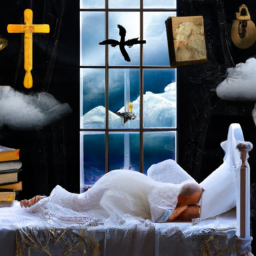
 Dream Meaning2 months ago
Dream Meaning2 months agoHow To Stop Wet Dreams As A Christian
-
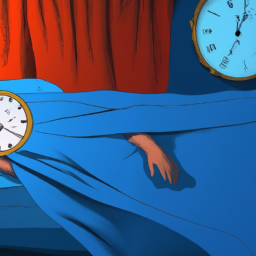
 Dream Meaning2 months ago
Dream Meaning2 months agoWhy Do Dreams Feel So Long
-

 Dream Meaning2 months ago
Dream Meaning2 months agoWhat Does It Mean When Your Dreams Come True




